Facade lighting makes it possible to achieve amazing results when decorating buildings. Considering that the primary task is to illuminate the structure, as well as to protect it from intruders, an amazing effect is created thanks to the illumination. Architectural illumination of building facades is an art that, thanks to only one light, gives others a real fairy tale.

Architectural lighting is a separate direction of lighting decor
Application of architectural lighting, its tasks
Content
- Application of architectural lighting, its tasks
- The main types of architectural lighting
- Flood lighting of facades
- Local lighting
- Contour lighting
- Illumination for the New Year
- Types of lamps used
- Video: Features of architectural lighting of buildings
- How architectural and artistic lighting transforms a picture - photo examples
Facade lighting became known in the United States at the beginning of the 20th century. It was used to transform prestigious neighborhoods in big cities, but later became popular in small, modest areas. It is the decorative illumination of various building facades that gives cottages and houses a special bright style. Today it is quite difficult to imagine architecture without facade lighting, so the lighting plan is discussed already during the period of drafting a house or a commercial building.

With the help of professionally executed lighting, you can advantageously present the features of the facade of the building and hide its visual imperfections
Illumination of commercial buildings definitely attracts people's attention, often bright illumination can be seen in the design of shopping centers, banks, cafes, shops, restaurants.
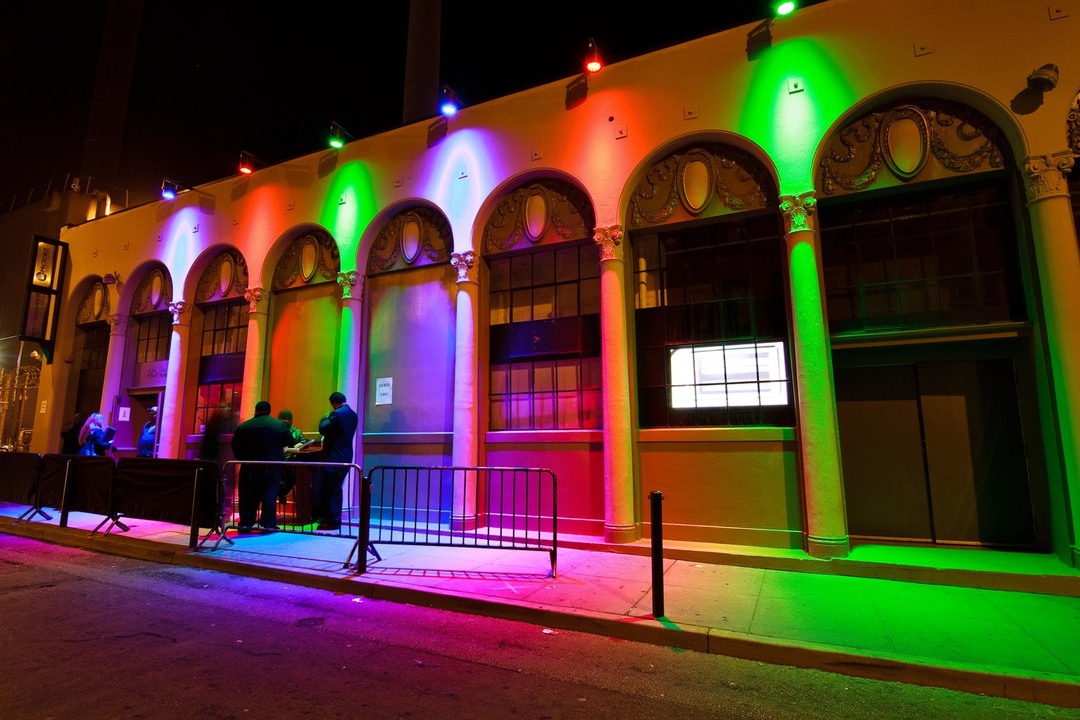
Properly organized lighting allows you to beautifully decorate the building and make it stand out against the background of other buildings
The use of lighting in private houses is one of the directions of lighting design, it is able to give a building high decorative qualities.
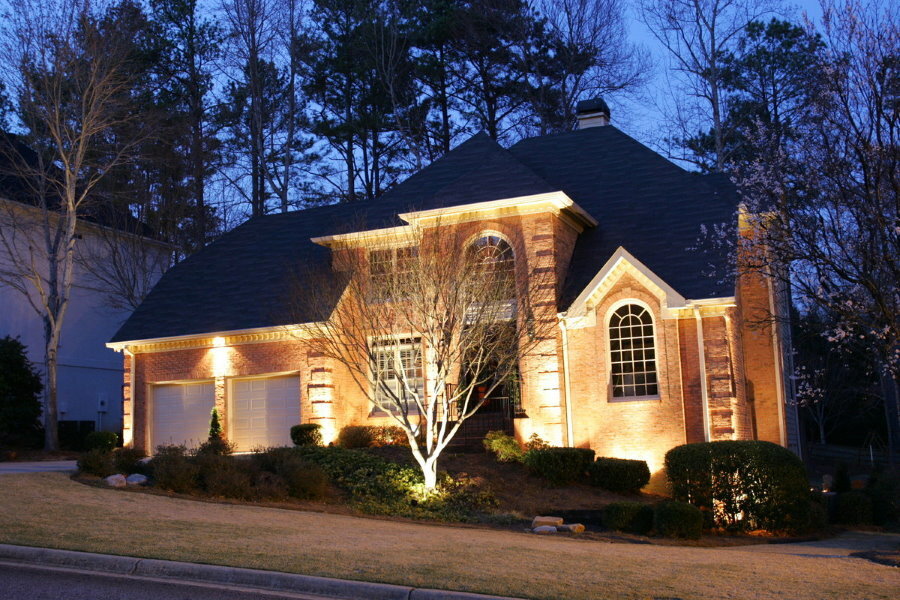
Illumination of the facade of a country house performs both an aesthetic and practical function.
The functional role of facade lighting is as follows:
- Increases the security of entering a building, parking lot or courtyard.
- Improves visibility of doors and walkways in the dark.
- Architectural lighting emphasizes the special status of a building's façade, so larger buildings are illuminated more brightly.
An architect uses a special computer program to develop a project. As soon as all documents are prepared and agreed upon, installation can be carried out.
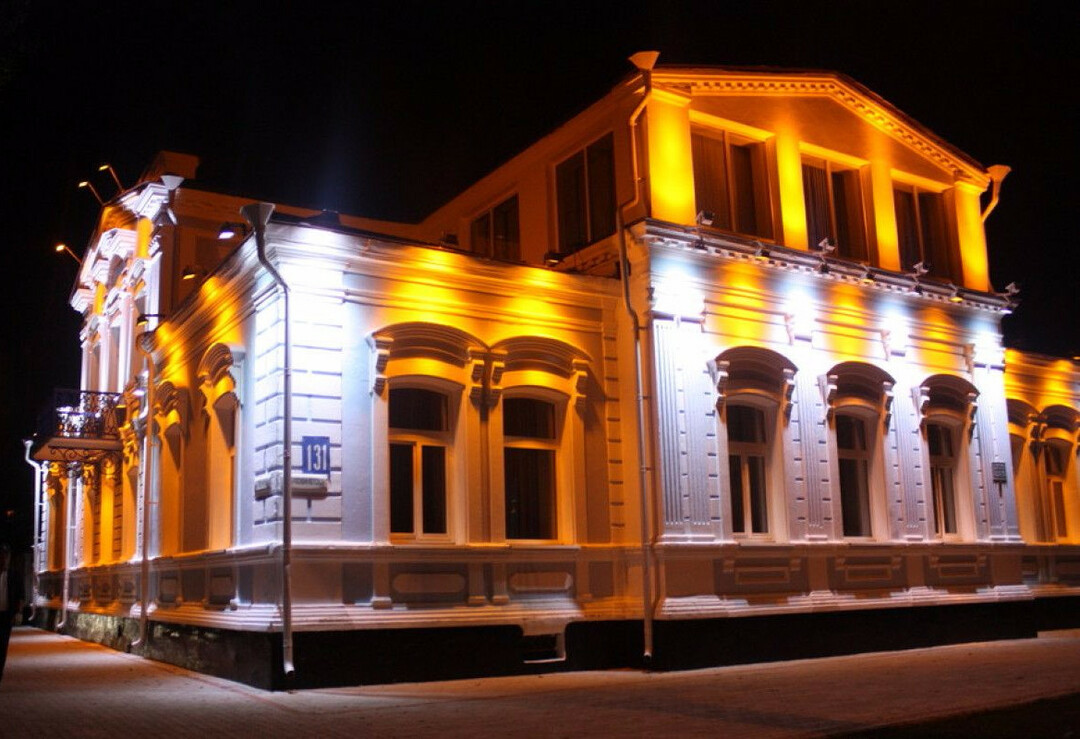
The lighting method is selected depending on the purpose of the building, its location and architectural features.
The main types of architectural lighting
There are several ways to organize lighting at home, and each of them has its own special purpose. The color of the cladding, the material is also of great importance, the characteristics of the adjacent buildings are also taken into account.
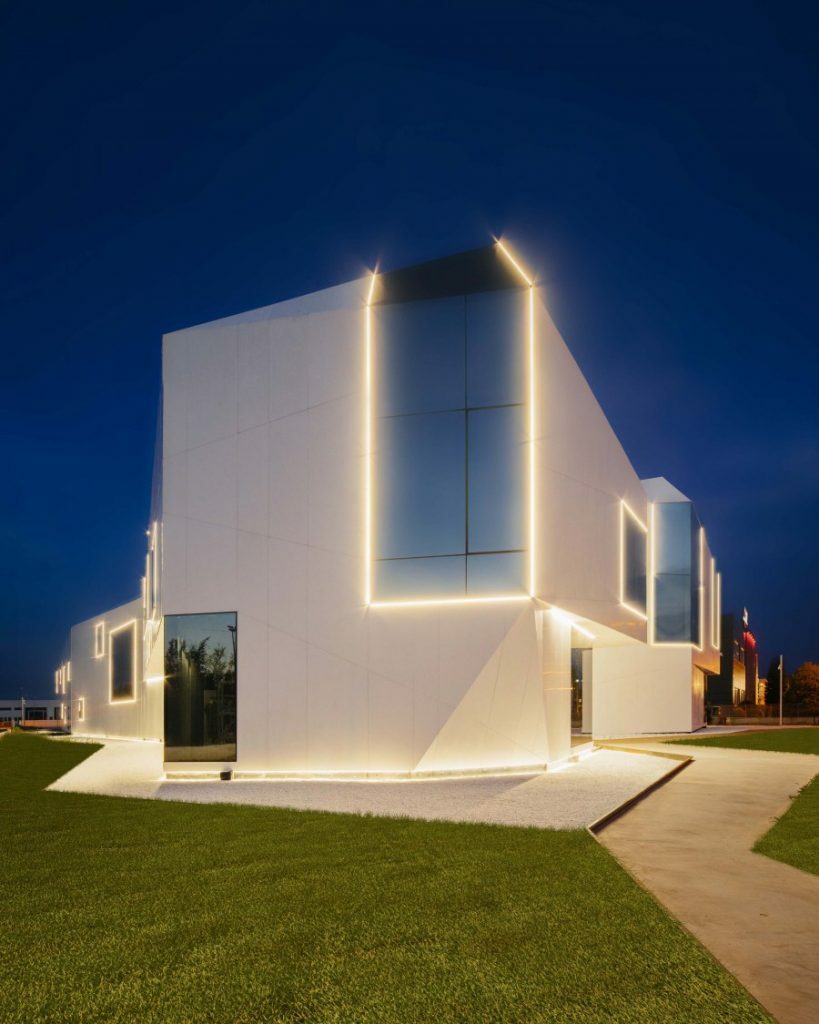
You can organize the lighting of the facade in different ways.
Flood lighting of facades
This type of lighting is the easiest to create. It is ideal if you need to highlight various cultural objects, churches or free-standing monuments. Flood lighting involves the installation of special projectors on the ground or on pillars that determine the direction of the light.
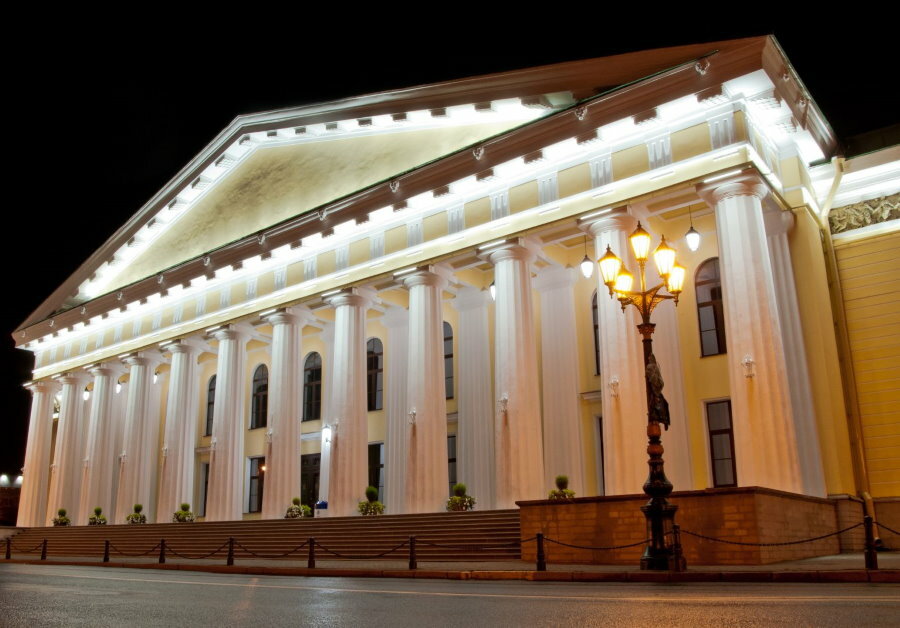
Flood lighting completely illuminates the building, from foundation to roof
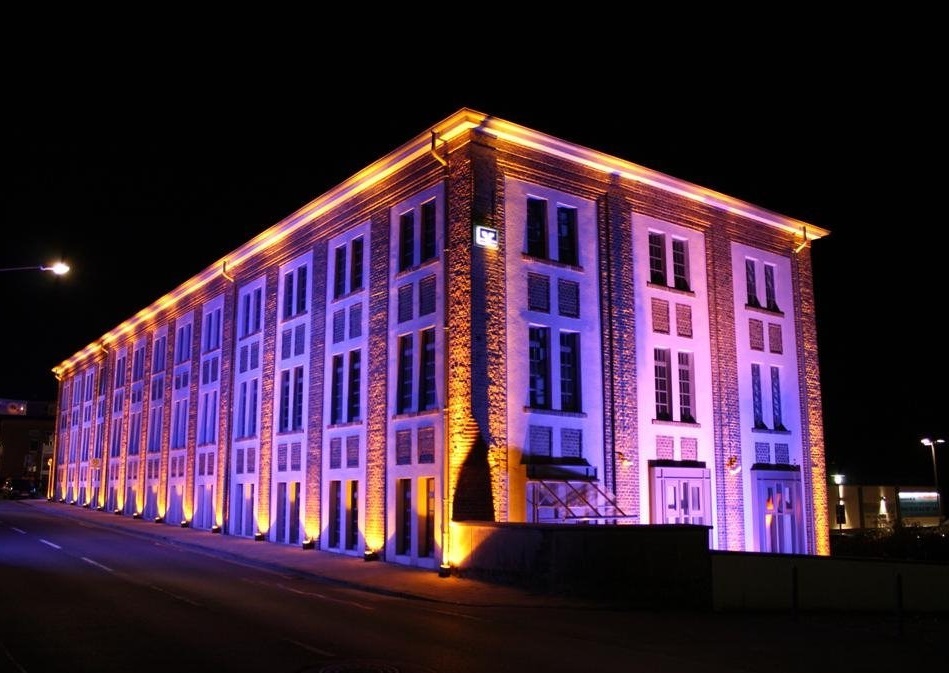
For full illumination of the facade, both powerful floodlights with diffused light and small lamps with directional light are used.
For residential buildings, such lighting will not be the best choice, since the light entering the windows will create some discomfort.
Local lighting
Local illumination is more suitable if you need to focus on any particular part of the building. For example, you can place accents on windows, cornices, balconies. This method is used both on wooden houses and on buildings faced with porcelain stoneware.
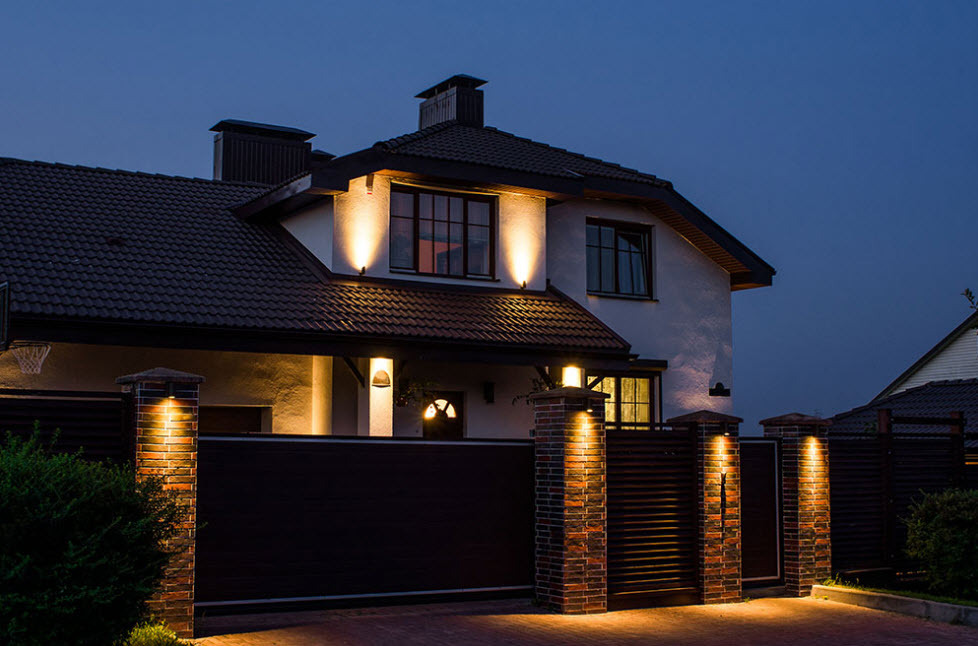
Local lighting is used when you want to draw attention to certain details of the house.
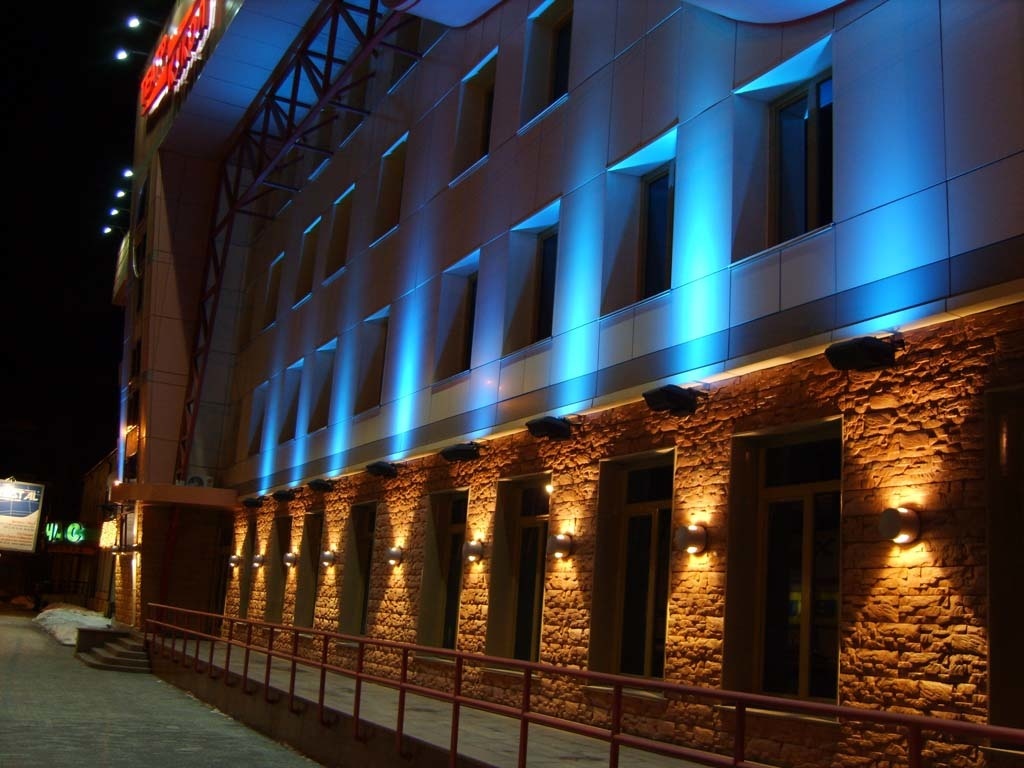
To highlight accents, the lamps are placed on the wall or along it at a short distance
Lighting design is obtained through the use of low-brightness lamps, which are installed in the desired part of the facade. Also, instead of a luminaire, a linear LED lamp can be used.
Local lighting will be appropriate if the building facade has several repeating elements, such as decorative stucco molding.
Contour lighting
Not so long ago, they began to use another method of lighting - contour. To do this, take LED strips, rulers or flexible neons. Luminous elements allow you to focus on the corners of the facade or other parts of it. Suitable for both residential buildings and commercial buildings.
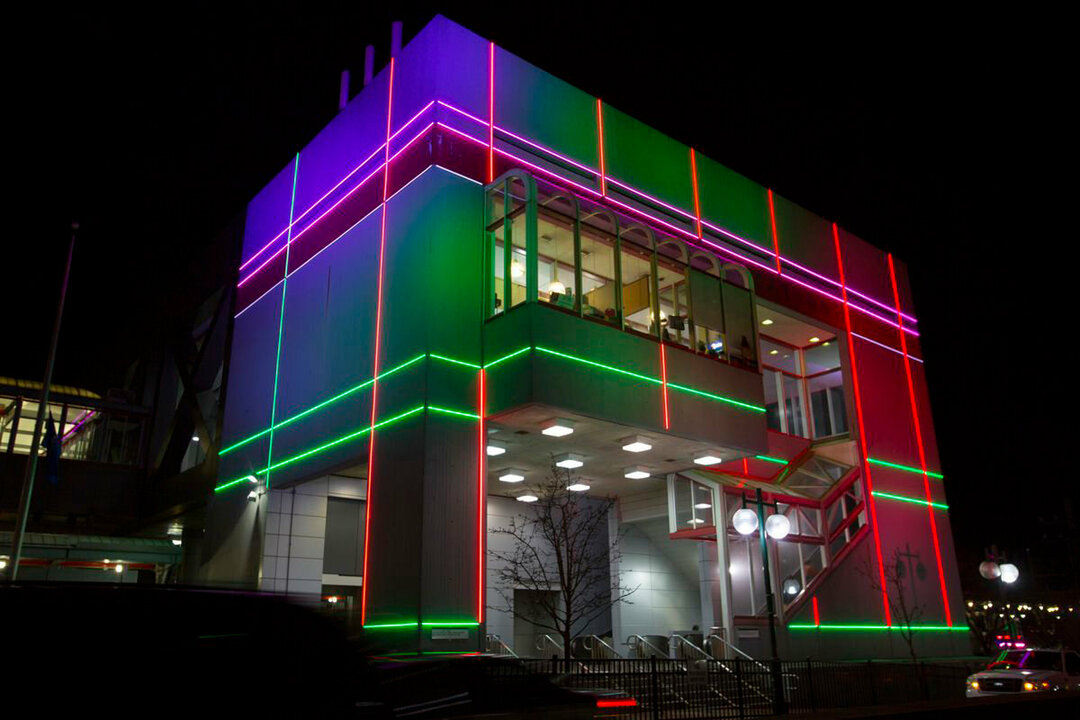
Contour lighting highlights the architectural details of the building
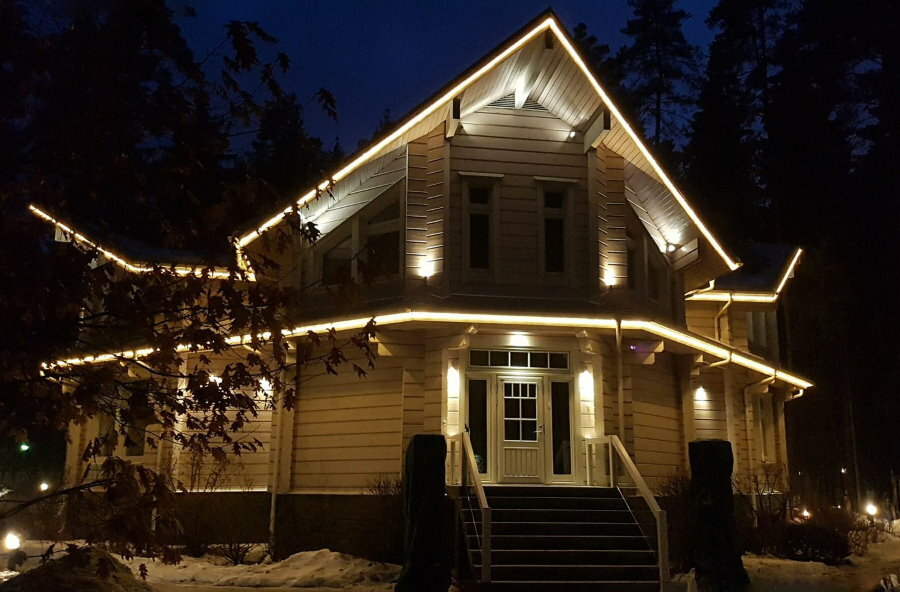
With the help of contour lighting, you can advantageously represent a specific element on the facade of a building: a balcony, a bay window or a staircase.
Illumination for the New Year
In Europe and America, this is an integral part of a beautiful winter wonderland. Many people know how New Year's illumination shines in big cities. This can be called a big event, as it is often covered on television and in the press. In some countries, there is a separate line in the national budget for spending on Christmas lighting of streets and buildings.

New Year's illumination is used to decorate public buildings and private residential buildings.
In Russia, New Year's illuminations began to gain popularity only recently. This is because previously the quality of lighting fixtures leaves much to be desired. Today, thanks to modern developments, there are many quality lighting fixtures to create a festive atmosphere.
To create a festive New Year's atmosphere, duralight is especially popular, which is a cord with LED lamps inside. They are obtained from a special polymer material.
Types of lamps used
Almost all types of luminaires are suitable for lighting the facades of structures. However, the requirements for them will be somewhat different from those that are installed inside the building.
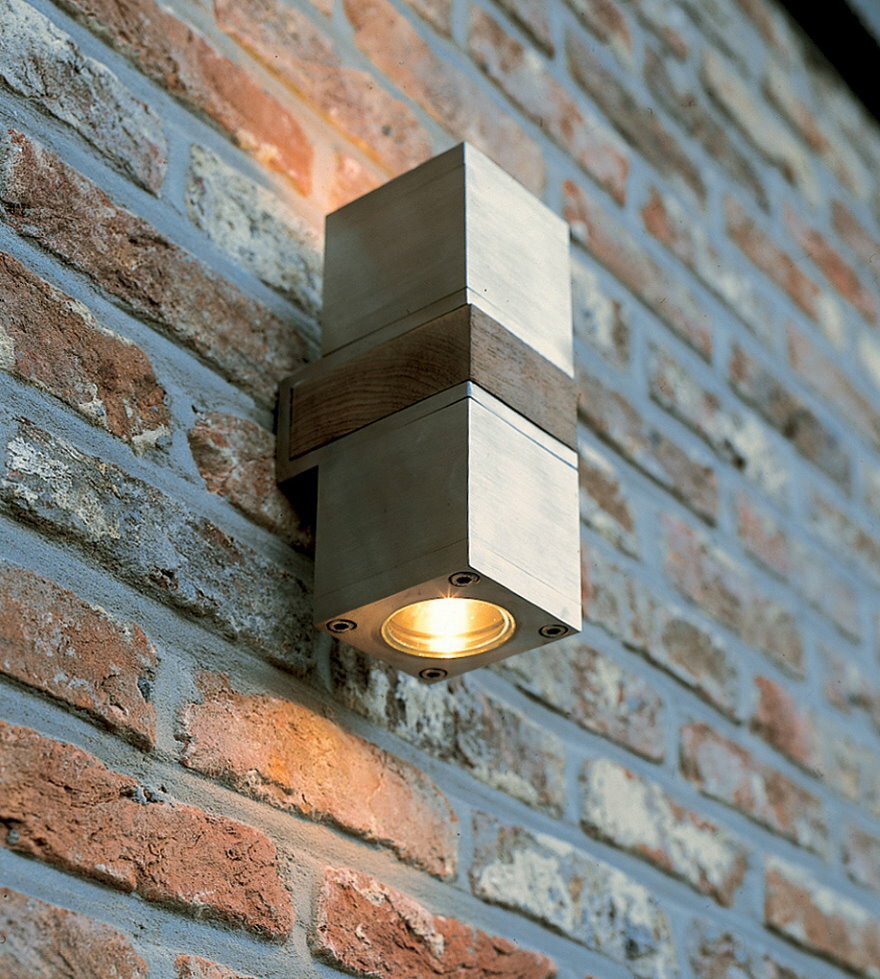
Street lamps are manufactured taking into account a whole set of requirements that ensure their safe operation.
The requirements are as follows:
- fire safety and electrical safety;
- no additional seams on the body;
- high degree of moisture and dust protection (from IP65);
- the ability to illuminate in any weather conditions;
- resistance to various external damage;
- the body of the luminaires should be made of aluminum, stainless steel, sheet steel with an anti-corrosion coating.
Requirements also apply to the appearance of the luminaires. They should not be conspicuous, and their color should match the tone of the facade or be neutral. In the daytime, the devices should not spoil the appearance of the facade of the house. Luminaires work for a long time, so it is necessary to choose those that consume the least energy.

The appearance of wall lamps should match the overall design of the facade of the house.
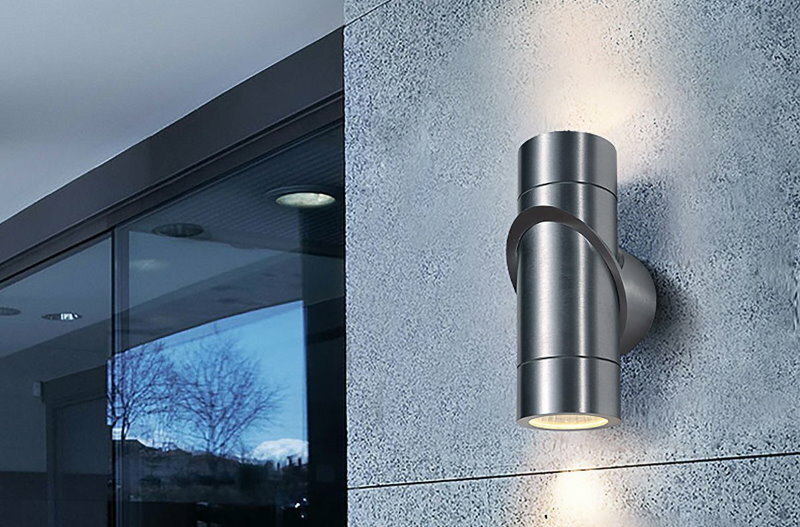
Laconic lamps to match the building wall will be the least striking.
Lamps are:
- linear;
- unpaved;
- accent;
- point.
For such devices, lamps are provided:
- metal halide;
- luminescent;
- LED.
Preference is mainly given to LEDs, since their advantage lies in low power at maximum brightness, as well as in a long service life. The diodes continue to work even in cold temperatures of -40 degrees and heat of + 40.
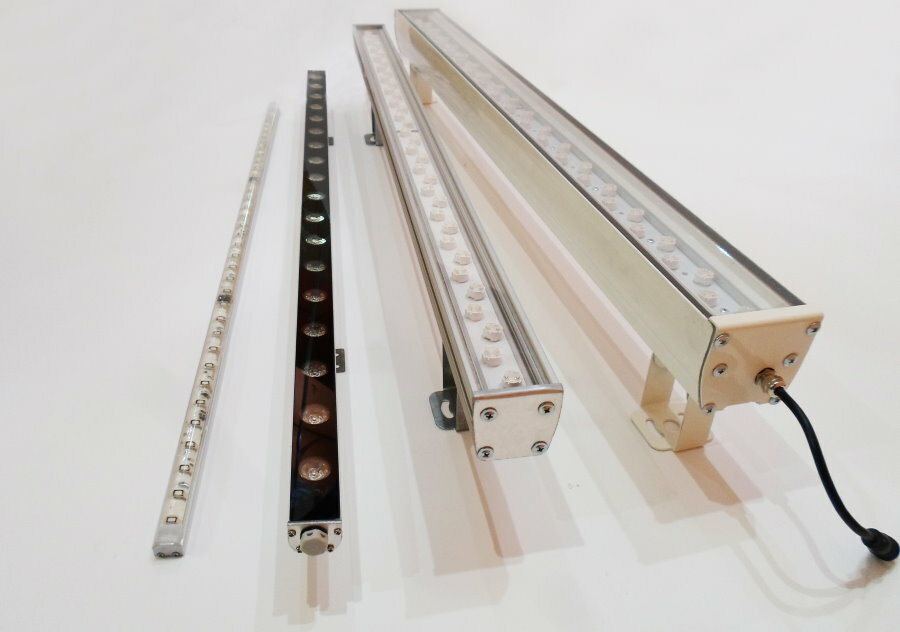
Strip LED lamps are used for decorative illumination of facades.
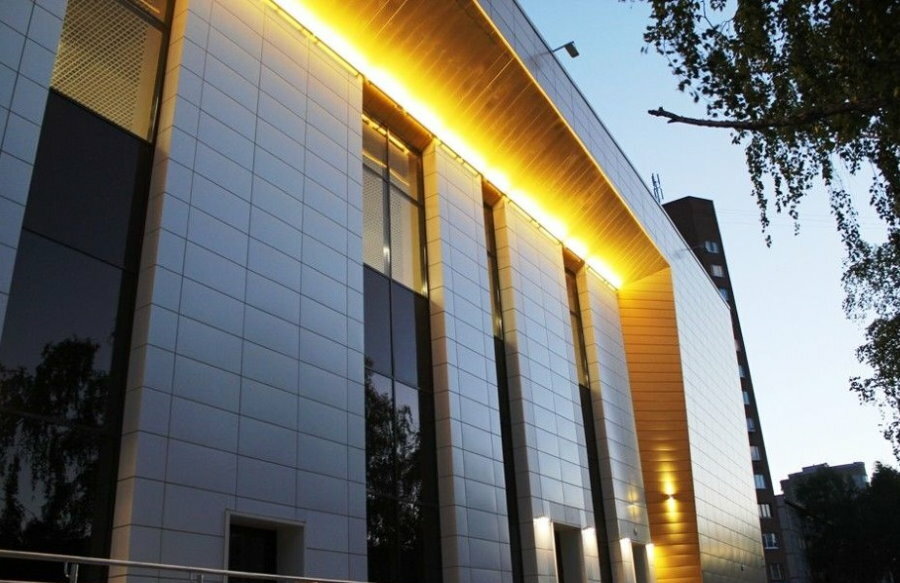
Linear luminaires can be used to illuminate a single architectural element
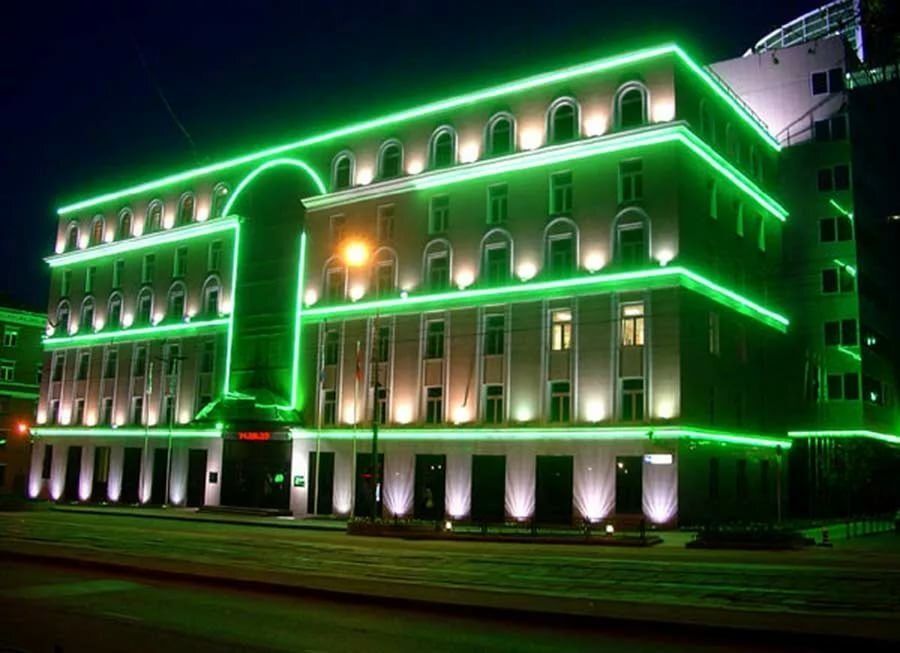
Such lamps create a certain light pattern on the facade of the building at night.
With the right organization of facade lighting, various ideas can be realized for a brighter perception of the environment.
